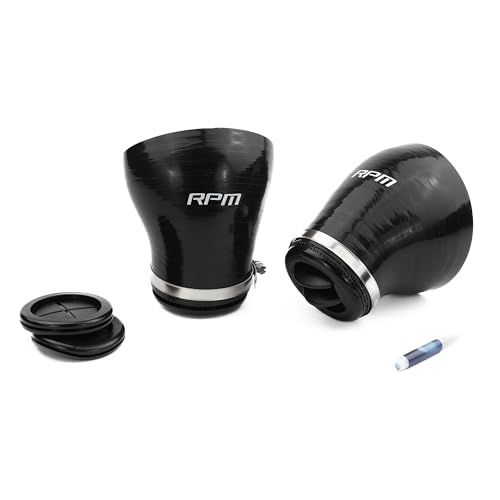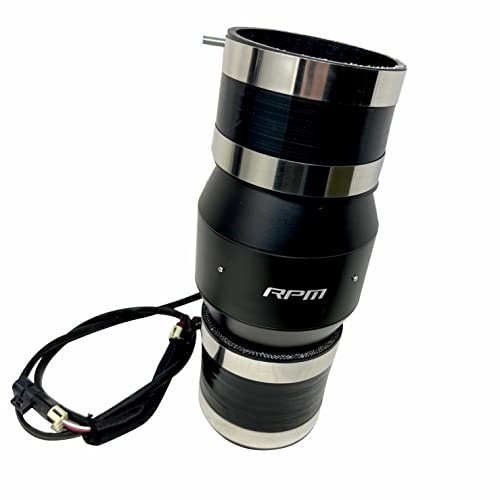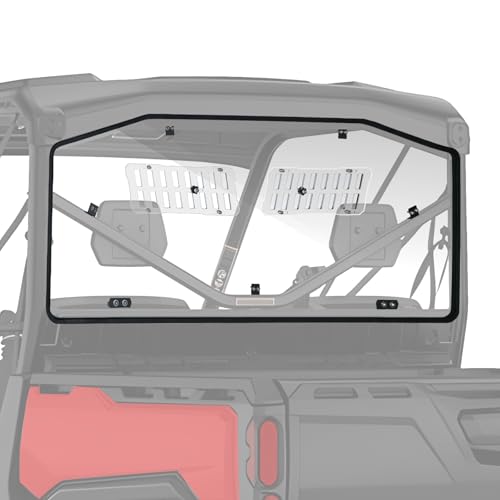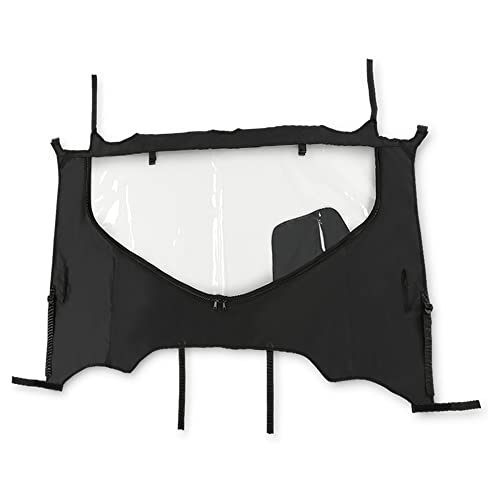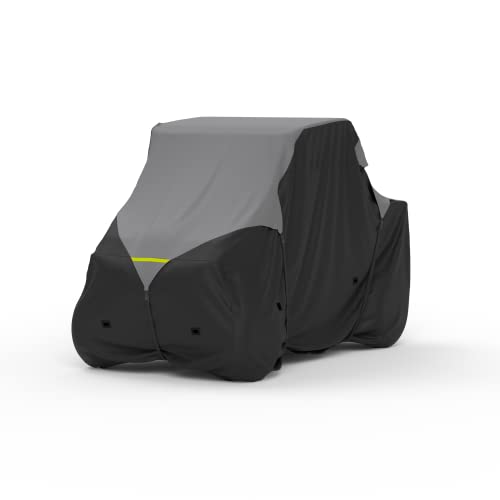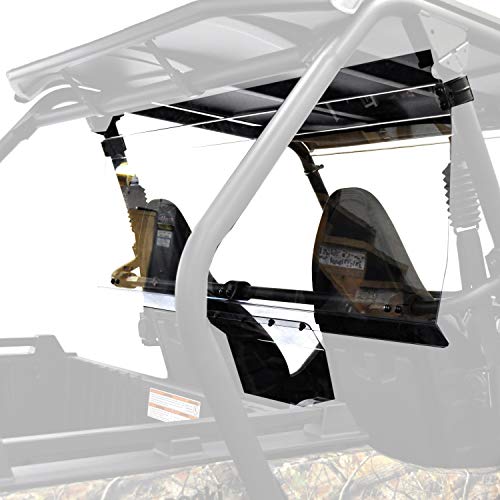Alright team, let’s talk cabin comfort again. We recently tackled how to reduce heat, but sometimes the issue isn’t just the temperature – it’s the air itself. Or rather, the lack of moving air.
Ever been cruising along, especially with a full cab enclosure, and felt like you’re breathing the same stale air over and over? Or maybe you’ve experienced that lovely phenomenon where dust just seems to hang and swirl around you, coating everything (including your lungs)? That feeling of being in a stuffy, dusty bubble can be just as unpleasant as being too hot.
I remember one particularly dusty group ride where my fully enclosed cab felt like a personal dust storm generator. Every time we slowed down, the air just hung thick. Achieving effective UTV cabin airflow improvement isn’t just a luxury; it’s key to staying comfortable, keeping your windshield clear, and even managing that pesky dust.
So, let’s move beyond just blocking heat and focus on getting the air moving. We’ll explore how different windshields play a role, the importance of cross-ventilation, ways to inject fresh air where you need it, and some cool innovative products designed specifically for UTV cabin airflow improvement. Time to clear the air and make our rides much more breathable!
Why Airflow Matters (It’s Not Just About Heat!)
While improving airflow certainly helps with heat dissipation, its benefits go much further:
- Comfort: Moving air, even if it’s not significantly cooler, feels better. It combats that stuffy, stagnant feeling and helps evaporate sweat, providing a cooling effect.
- Dust Management: This is a big one for many riders. Without proper airflow, dust kicked up by your own machine or others can get sucked into the cab and just swirl around (often due to negative pressure). Strategic UTV cabin airflow improvement can help create positive pressure or a flow-through effect to push dust out or minimize its entry.
- Fogging Prevention: A common annoyance, especially in humid or cool conditions, is windshield fogging. Consistent airflow across the windshield surface is the best way to prevent condensation buildup and maintain visibility.
- Stale Air Removal: In a sealed cab, CO2 levels can rise, and the air just generally feels stale and unpleasant after a while. Bringing in fresh air keeps things, well, fresher!
Windshield Wonders: The First Line of Airflow Control
Your front windshield is the primary interface for air entering the cab while moving. Choosing the right type is crucial for managing airflow:
Vented Windshields
These are probably the most popular solution for enclosed cabs. They feature closable vents (often sliding or flip-open) typically located at the bottom or sometimes top/sides.
- Pros: Allow you to bring in fresh air without the full wind blast of an open windshield. You can control the amount of air to some extent. Great for pushing out stale air and helping with defogging.
- Cons: The size of the vents limits the maximum airflow volume compared to an open windshield.
Tilting/Flip-Up Windshields
These offer more versatility. They can be tilted open slightly at the bottom or flipped up completely.
- Pros: Provide options from minimal airflow (tilted) to maximum airflow (fully open). Excellent for adapting to changing conditions.
- Cons: Can let in significant dust/rain when fully open. The mechanisms can sometimes rattle or be less secure than fixed windshields.
Half Windshields
Covering only the bottom half, these primarily deflect wind over the occupants.
- Airflow Dynamics: They don’t enclose the cab, so airflow isn’t restricted in the same way. However, they create specific aerodynamic effects that can sometimes reduce dust intrusion by changing the pressure dynamics, while other times they might seem to scoop it in. Their effect on dust is highly dependent on the specific UTV and other accessories (like roofs).

Creating Cross-Ventilation: Getting Air Moving Through
Bringing air in the front is only half the battle. For truly effective UTV cabin airflow improvement, that air needs somewhere to go. Stale, hot, or dusty air needs an escape route.
Rear Window/Panel Management
This is absolutely critical for flow-through ventilation. If you have front vents or an open windshield, but a solid rear panel, you create positive pressure, but the air doesn’t flush through effectively.
- Options: Removing the rear panel entirely provides maximum outflow but offers no protection. A vented rear panel (with mesh or louvers) allows air out while offering some protection. Soft rear panels often have zippered windows you can open.
- Benefit: Allowing air to exit the rear prevents the cab from becoming a stagnant pressure cooker and actively pulls fresh air through from the front.
Door Window Options
Full doors obviously impact airflow significantly.
- Options: Doors with roll-down or sliding windows offer the most control. Half doors allow constant lower airflow. Some aftermarket door panels might incorporate small vents.
- Consideration: Balance your need for airflow with protection from mud, water, and trail debris.
The Flow-Through Principle
Remember this: Air In + Air Out = Airflow. You need both for effective ventilation, dust management, and heat removal. Simply opening a front vent without providing an exit path is far less effective than creating a complete circuit.
Targeted Air Injection: Scoops, Vents, and Fans
Sometimes, general airflow isn’t enough, or you want to direct fresh air to specific areas (like your feet or face).
Cab Vent Kits (e.g., RPM Cooler Air Vent Kit)
These kits typically involve mounting air scoops in strategic locations (like behind the front wheels or on the firewall) where they can catch moving air. Hoses route this air to adjustable louvered vents inside the cab, often in the footwells or lower dash.
- Mechanism: They use the vehicle’s forward motion (ram air effect) to force outside air into the cab.
- Pros: Delivers a direct blast of fresh outside air. Louvers allow you to aim the airflow. Can be very effective at speed.
- Cons: Requires cutting holes in your firewall or plastics. Effectiveness drops significantly at low speeds or when stopped. Depending on scoop placement, they can potentially ingest dust or water.
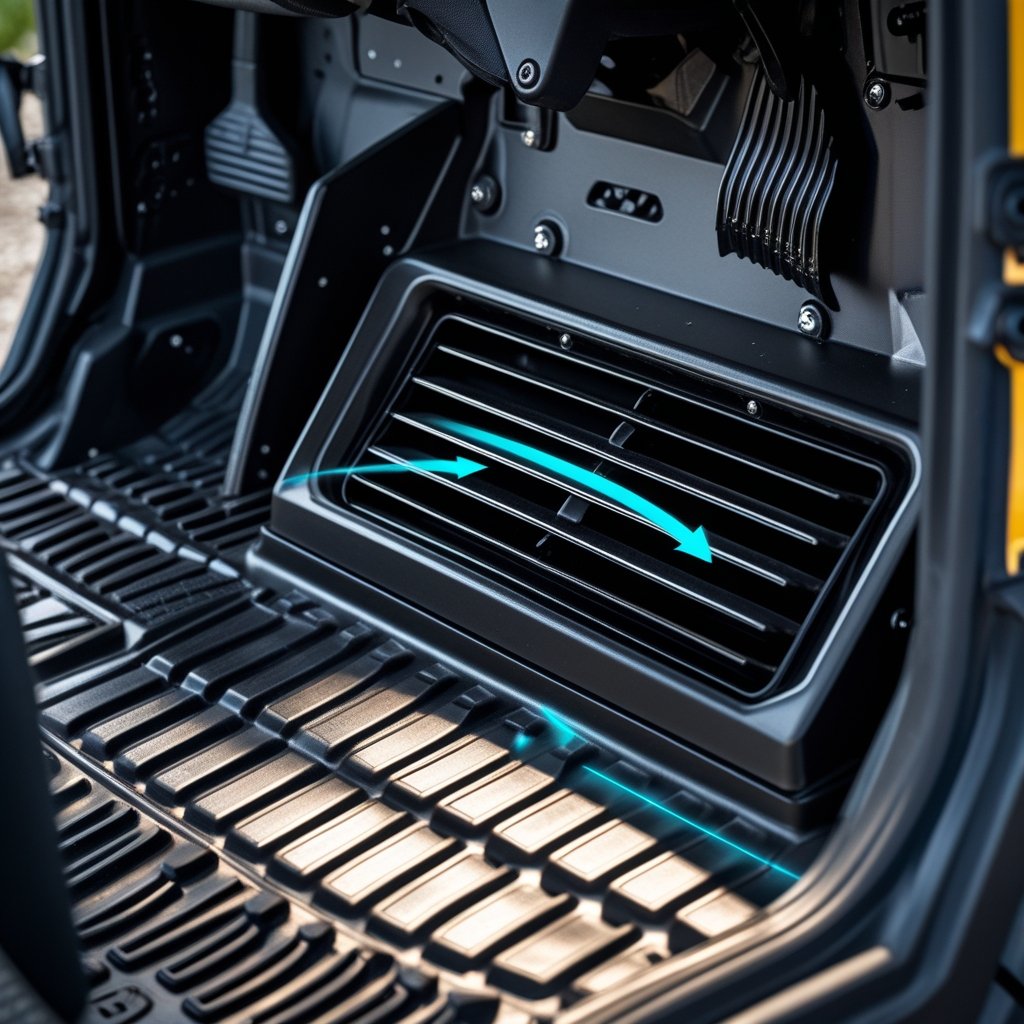
DIY Air Scoops/NACA Ducts
Many resourceful owners create their own ram air systems using universal automotive air scoops or low-profile NACA ducts, plumbing them with flexible ducting hose to vents inside the cab. This offers more customization but requires careful planning.
- Considerations: Placement is key to maximizing air capture while minimizing debris intake. Ensure hoses are routed safely away from hot exhaust or moving parts.
Cab Fans (12V)
Electric fans are a simple and popular way to improve comfort.
- Pros: They work regardless of vehicle speed, providing relief even when stationary or crawling slowly. They circulate the air already in the cab, creating a wind chill effect.
- Cons: They don’t bring in fresh air unless positioned strategically near an existing vent or opening. They require 12V power and wiring.
- Placement: Mounting fans on the dash, roll cage, or roof aimed at the occupants is common. Pointing a fan at the windshield is also effective for defogging.
Subtle Solutions: Innovative Airflow Enhancements
Beyond the obvious vents and fans, some clever products offer more subtle UTV cabin airflow improvement.
Aero Latches (e.g., Supercomp USA)
These ingenious little devices replace part of your stock door latch mechanism.
- Description: They are designed to hold the door securely closed but create a very small, consistent gap (just millimeters) around the door seal. This allows for constant passive ventilation.
- Pros: Super easy, tool-free installation. Provides continuous airflow without the noise or exposure of an open window. Helps alleviate negative pressure in the cab, which can reduce dust being sucked in through other gaps. Minimal visual impact.
- Cons: The airflow volume is small, so it’s best viewed as a supplementary solution, not a primary cooling method on its own.
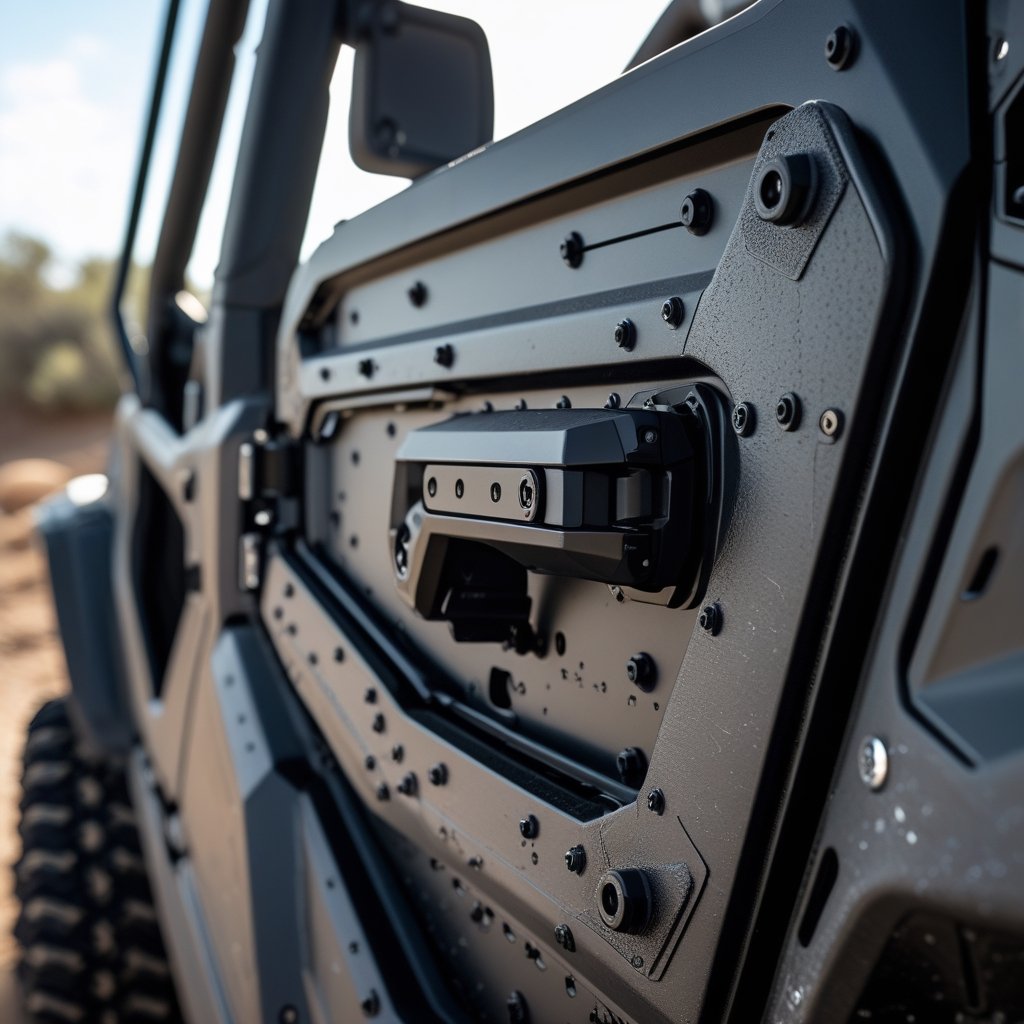
Roof Air Foils/Scoops (e.g., Razorback Offroad)
These roof-mounted devices are primarily designed for dust management.
- Mechanism: They use aerodynamics to alter the airflow over and behind the UTV, often aiming to create positive pressure in the cab or redirect the dust cloud away from the rear window or air intakes.
- Secondary Benefit: By influencing the pressure dynamics, they can indirectly contribute to better overall cabin air exchange, although their primary function isn’t usually direct occupant cooling.
Conclusion: Ride Fresher, Ride Longer!
Nobody enjoys feeling like they’re riding in a stuffy, dusty fishbowl. Thankfully, achieving significant UTV cabin airflow improvement is well within reach.
By strategically managing how air enters (windshields, vents), how it exits (rear panels), and how it circulates inside (fans, latches), you can transform your cab environment. Remember the flow-through principle – air needs an entry and an exit!
Combining a few of these strategies – perhaps a vented windshield, a vented rear panel, and a set of Aero Latches or a cab fan – can make a world of difference in comfort, dust management, and overall ride enjoyment. Investing in UTV cabin airflow improvement means less fatigue, clearer visibility, and more time spent happily on the trail.
What airflow setups have worked best for you? Any genius DIY solutions or must-have products I missed? Share your tips in the comments below!
Breathe easier and ride longer!



